1st – 2nd January 2024
Our first full day at sea was full-on, with no time to recover from any possible excesses the night before. We were bombarded with information, mandatory Zodiac and Wildlife Awareness Briefings, including measures to prevent us causing the spread of Avian flu, a kayaking briefing for those hoping to do some paddling, optional lectures, jacket and boots exchanges and a recap and briefing just before dinner on our programme of activities on the Falkland Islands. Phew!
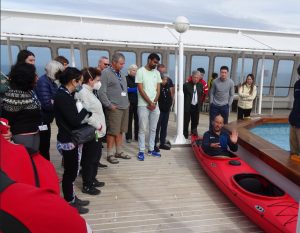
The Falklands, West Point Island
We awoke to lovely weather and calm seas, just off West Point Island, for a dry landing on a pier in a tranquil bay, where a settlement was established in 1879. We were in the first group ashore, where we ascended up a steep incline before walking 2.5 km to the Devil’s Nose. Dramatic cliffs housed several thousand Black-Browed Albatross, nestling on their ancient mud nests with their fluffy grey/white chicks, and several hundred rockhopper penguins, sheltering with their down-covered chicks amongst the albatross. We followed a track through the tussock grass, careful to keep a distance of 5 metres away. Then we descended to the cliff’s edge for another view. Spectacular!
We walked back to the pier, across the grassy landscape, stopping to admire the views of the islands and sea, striated caracaras and turkey vultures, two of which blocked our path. The weather was sunny, but bracing, a bit reminiscent of Scotland – beautiful if dressed appropriately!
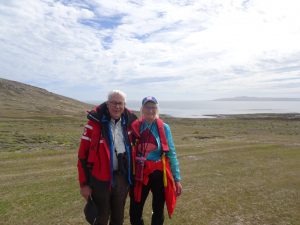
We stopped for tea and a magnificent spread of cakes, a tradition dating back to the arrival of the first passenger vessel in 1968, provided by the only residents on the island, in a house built in 1884. The house is sheltered by windswept trees and surrounded by a beautiful English garden.
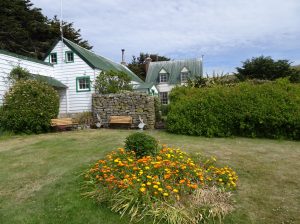
We then descended to the beach, for a stroll along the white sands, admiring the penguins, oystercatchers and steamer ducks. What a wonderful landing and lovely morning!
Saunders Island
This required a wet landing amidst strong winds and clouds threatening rain. The island housed the first British settlement in the Falklands in 1765, because of its safe harbour and nutritional plants. There are now seven people resident on the island but much more wildlife, as well as farmed cattle and sheep.
There was a walking loop from our landing bay at The Neck to a beach across the island, well-trodden in one direction. Contrariwise we went the other way, over-awed by the sheer number of penguins; we saw King Penguins mixed with Magellanic Penguins and Gentoos. What a noise they made! We encountered Kalle who was photographing a striated caracara, flapping his wings majestically for the picture. The beach was thronging with penguins making their way in lines back and forth.
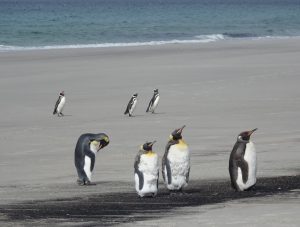
We made our way to the rockhopper colony at the end of the beach to marvel at them hopping up and down the rocks, into and out of the dashing sea waves, climbing high among the cormorants. How funny they look.
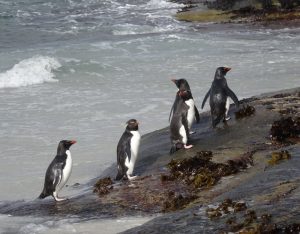
We climbed up the side of the cliff to see cormorant nests and a Black Browed Albatross colony, passing sheep and Magellanic penguins in their burrows. Unexpectedly we saw a school of Commerson’s Dolphins playing in the shallows below the cliffs. The water was so clear we could see their distinctive markings. A total joy.
It was getting late; we were the last to reach the Albatross colony, then helping Expedition Guide Echo to collect the red flags that marked the route back.
What a fantastic afternoon, far surpassing our expectations.
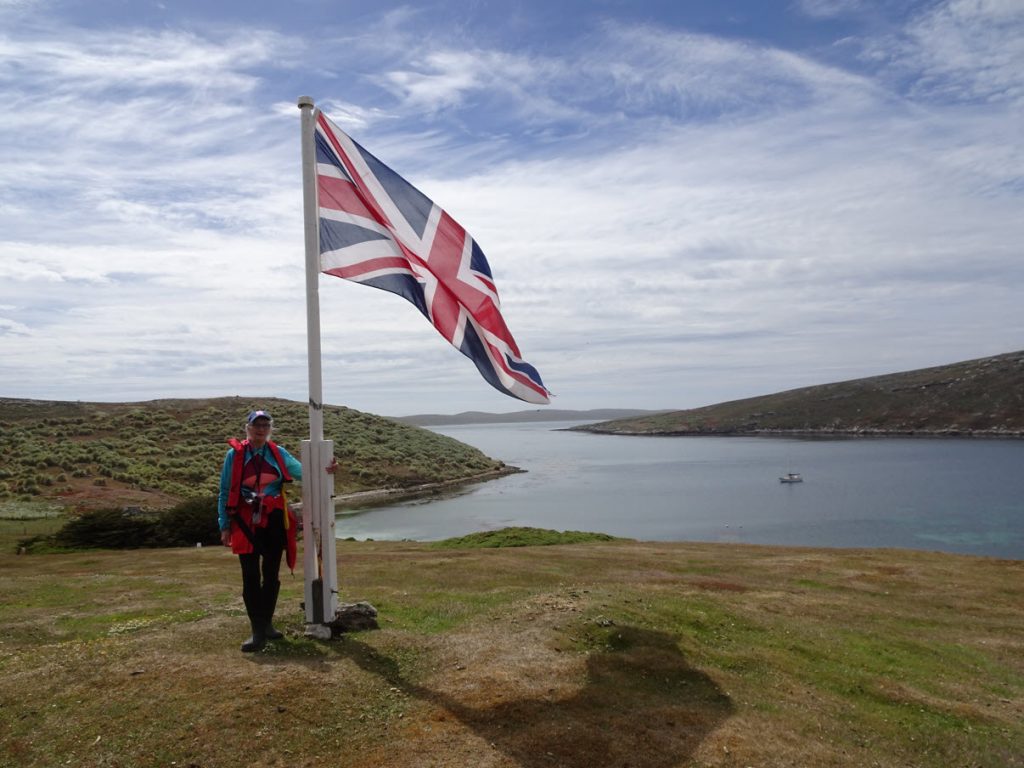
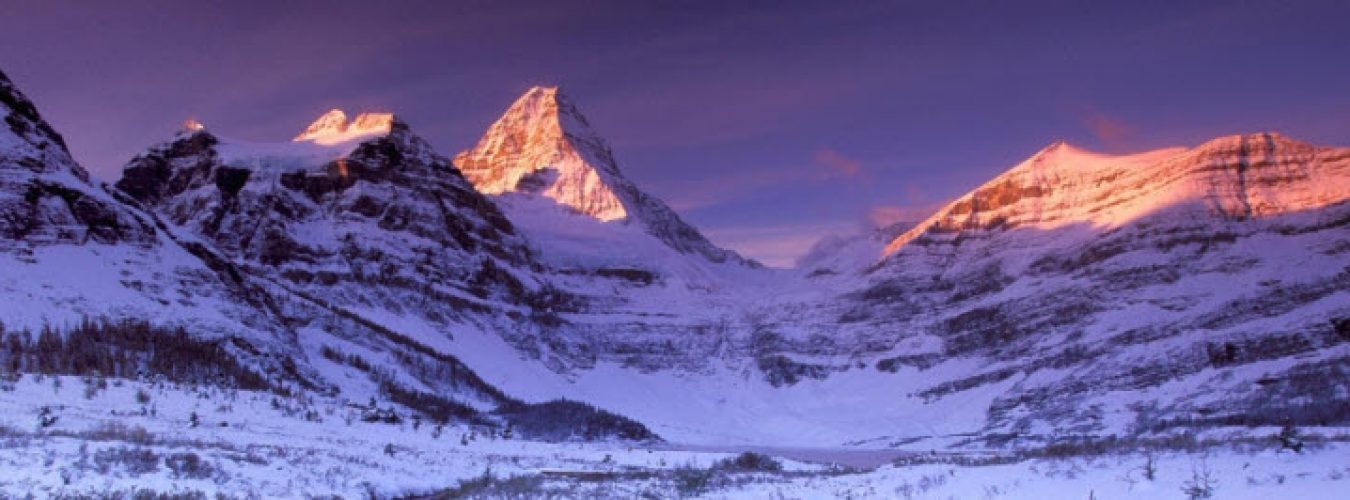
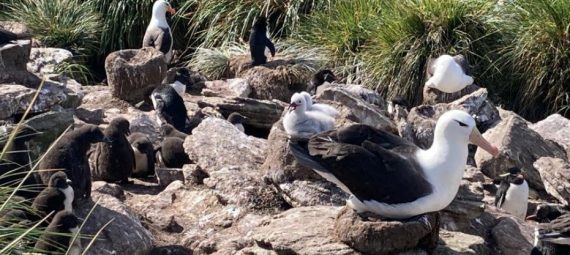
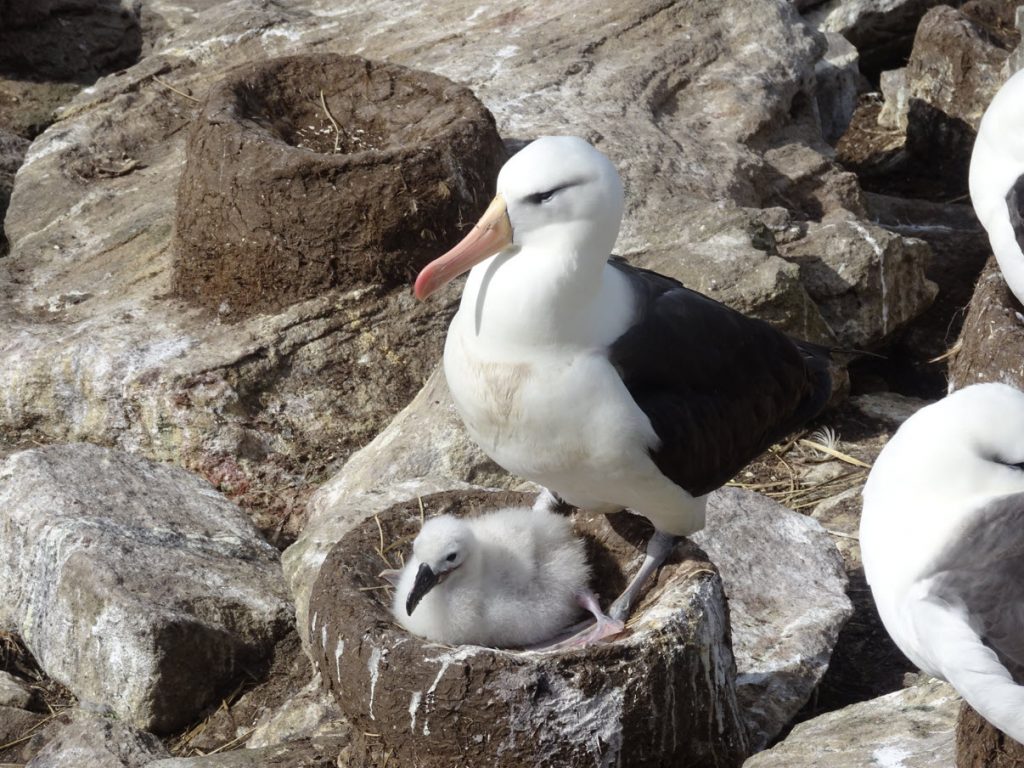
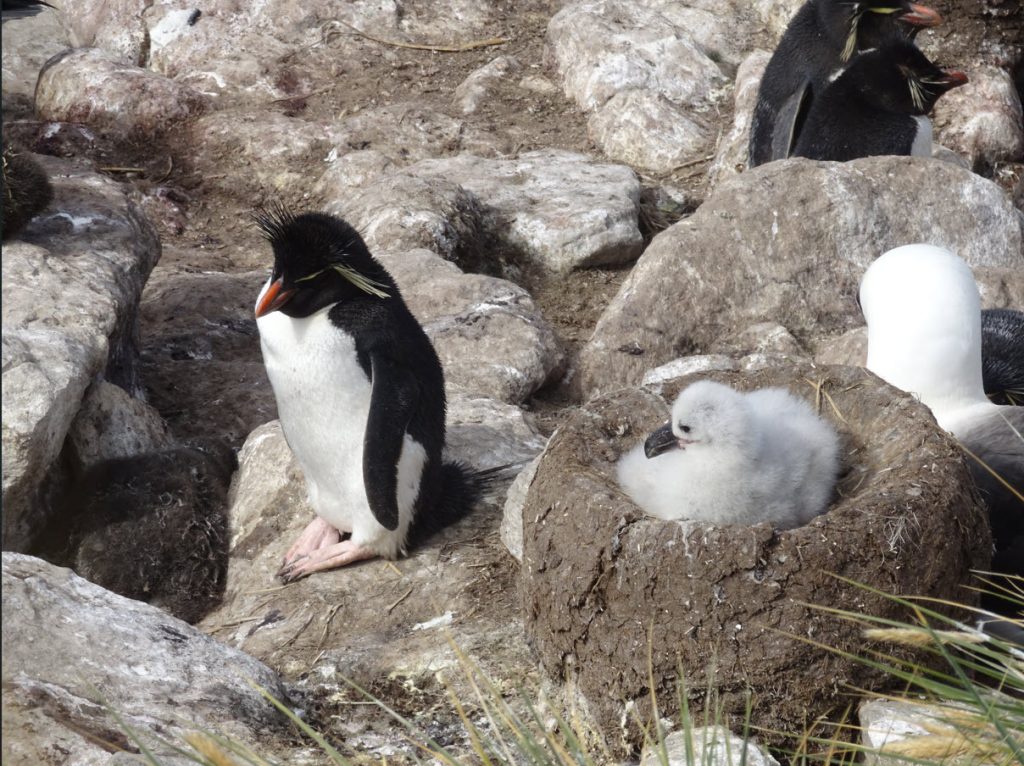
So glad to see your thirst for travel & adventurenis undiminished. Only sorry I’ve comemto this thread so late. Keep up, Tim!